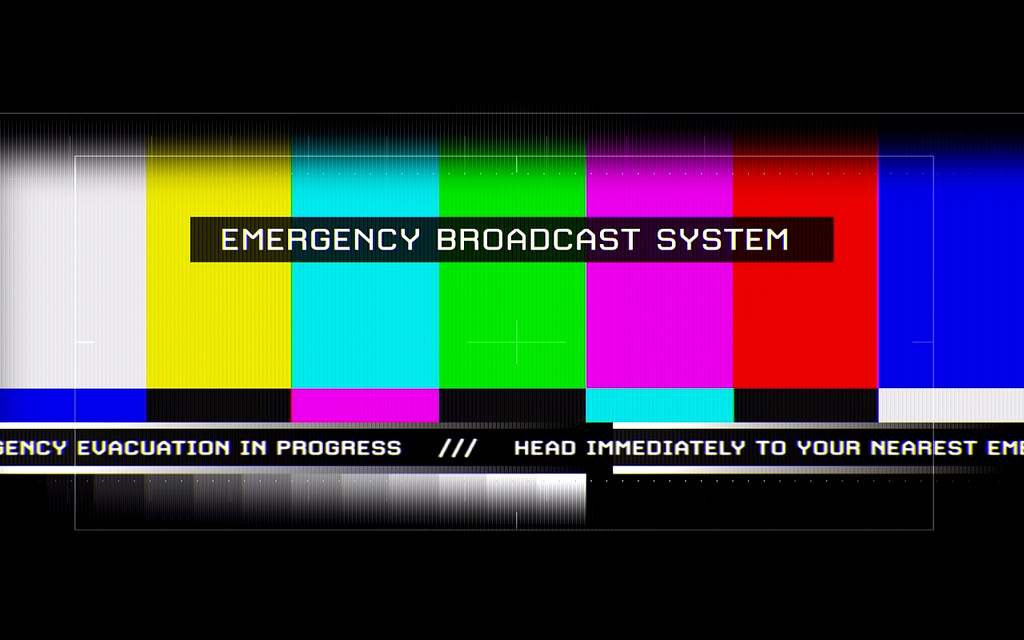
These days, the need for an emergency broadcast system is more urgent than ever before. With the entire planet facing climate change, inundated with natural disasters and calamities, the abnormal has become a normal occurrence almost everywhere in the world.
In the United States of America, Category 4 hurricanes are no longer uncommon. California alone has been bracing and preparing for “The Big One”–an anticipated massive earthquake that could shake the state to its very core and cause a wide variety of damage, loss, and suffering–for some time.
Imagine the extent of damage that these natural calamities can inflict when they do occur. Without an emergency broadcast system in place, thousands, and even millions of lives will be at stake.
Quick Navigation
What Is an Emergency Broadcast System?
History of the Emergency Broadcast System
Technological Advancements and Improvements
What Situations is an Emergency Broadcast System For?
Extreme and Dangerous Weather Alerts
State and Local Emergency Alerts
National Emergency Alerts
Benefits of Implementing an Emergency Broadcast System
As a National Public Warning System
Alternate Communication
State and Local Warnings
Emergency Development
Wireless Alerts
Conclusion
What Is an Emergency Broadcast System?
We’ve all seen and heard this announcement on TV or over the radio: “This is a test of the Emergency Broadcast System… this is only a test.” We cross our fingers every day, hoping that it will continue to be just “a test” instead of an actual emergency announcement. However, emergency preparedness can never be dismissed. It should always be at top of our minds. As the saying goes, “it is better to be safe than sorry.”
History of the Emergency Broadcast System
The concept of an emergency broadcast system actually began during the Cold War. It became the means for the president of the United States to connect with all Americans in the event of a national emergency.
By the mid-1960’s, the U.S. government began utilizing the emergency broadcast system to transmit state and local emergency alerts via local broadcast networks. The Federal Communications Commission (FCC) mandated all television and radio stations air the attention signal and a test script on a weekly basis.
Technological Advancements & Improvements
According to the New York Times, the emergency broadcast system has been activatedmore than 20,000 times from 1976 to 1996. The FCC gave the system a thorough renovation in 1997. It has since been renamed the Emergency Alert System (EAS).
Advancements in communication technology have made the system of sending emergency notifications even more effective and efficient. Digital technology has enabled the emergency broadcast system to send out information-packed announcements and alerts to specific areas in a more rapid manner.
The digital age has also significantly changed the way the weekly test is conducted. It has been shortened to an eight-second digital data signal which can be produced by TV stations, AM/FM radio stations, and cable systems (with at least 10,000 subscribers) as well as digital radio, TV, and direct broadcast satellite providers.
What Situations is an Emergency Broadcast System For?

Extreme and Dangerous Weather Alerts
In the event of inclement weather, the National Weather Service transmits an alert to the National Oceanic and Atmosphere Administration’s Weather Radio (NWR) signal. This NWR signal utilizes specific area message encoding (SAME) and coding protocols that are comparable to the emergency broadcast system. The broadcast station’s EAS equipment then decodes the signal and sends the weather warning to the public (usually as a scrolling script found at the bottom of your TV screens.)
State and Local Emergency Alerts
Urgent information from state and local officials may also be transmitted through the emergency broadcast system. This is when the Federal Emergency Management Administration (FEMA) gets to work. Messages are transmitted through various channels by the FCC and the emergency broadcast system: satellite companies, cable systems, stations, or any other participating services. Important emergency information such as AMBER alerts (missing children), SILVER alerts (missing elderly), or local emergency weather information can be relayed by state and local authorities as needed.
National Emergency Alerts
Additionally, the role of an emergency broadcast system is not limited only to providing the public with emergency information. As we have previously mentioned, historically, the EAS was conceived with the primary purpose of allowing the president of the United States to communicate with citizens directly in the event of a national emergency.
Broadcasters, cable TV systems, wireless cable systems, satellite digital audio radio service providers, and direct broadcast satellite providers are required by the FCC to prioritize and enable the President to communicate through all possible channels clearly and without interruptions should a national crisis occur.
Benefits of Implementing an Emergency Broadcast System

The emergency broadcast system continues to improve and evolve alongside advancements in communication and technology. This means that the channels and devices utilized by the FCC are improving as well. These days, you don’t need tobe glued to your TV or radio to keep track of emergency alerts. You can receive emergency alerts conveniently through your cell phone or mobile device.
In 2012, United States President Barack Obama issued an executive order assigning National Security and Emergency Preparedness (NS/EP) communications functions. The Secretary of Homeland Security is responsible for overseeing the organization and management of NS/EP communications functions including the Next Generation Network Priority Program.
This means that the president will be given top priority when it comes toutilizing voice and data communications as “communication networks evolve.” Building a next-generation network of communication channels into the nation’s emergency plan definitely adds to the efficacy of America’s emergency broadcast system.
In essence, an emergency broadcast system is part and parcel of emergency preparedness. It dictates and determines the course of action that needs to be taken in the event of a natural disaster or a national crisis. By doing so, it saves lives and ensures the safety and protection of every citizen.
To sum up the advantages of having an emergency broadcast system in place, here is a list of some of the Emergency Alert System’s key benefits:
1.As a National Public Warning System
The Emergency Alert System assures the public that the President is capable of communicating with all Americans in the event of a national emergency.
2.Alternate Communication
Should a local or national emergency occur, the Emergency Alert System may also be utilized when other means of communicating with the public are unavailable.
3.State and Local Warnings
State and local authorities are able toutilize the Emergency Alert System to deliver urgent and vital information during emergencies such as AMBER and SILVER alerts, imminent threats, or dangerous weather conditions.
4.Emergency Development
The Integrated Public Alert and Warning System (IPAWS) complements the role of the Emergency Alert System by modernizing and integrating the country’s existing and future alert systems, technologies, and infrastructure.
5.Wireless Alerts
The Integrated Public Alert and Warning System’s infrastructure makes provisions for wireless emergency alerts (WEAs). This makes sending vital, life-saving information quicker and more effective.
Among those who can send wireless emergency alerts are The National Weather Service, The National Center for Missing and Exploited Children, state and local public safety officials, as well as the President of the United States.
Wireless emergency alerts cover three alert categories: AMBER, imminent threat, and presidential. Network congestion does not impact wireless emergency alerts, thus ongoing text messages, calls, and data sessions are unaffected by these emergency alerts.
Conclusion
In order for an emergency broadcast system to function optimally, it has to adapt to technological advancements as well as the ever-changing needs of the general public.
The Federal Communications Commission, the Federal Emergency Management Administration, and the National Oceanic and Atmospheric Administration’s National Weather Service are taking great strides to ensure that the nation’s emergency broadcast system is always working at an optimum level.

What Is the FCC's role?
The Federal Communications Commission determines the rules which establish the technical standards for the Emergency Alert System as well as the technical protocols and procedures involved during its activation. The FCC also enforces its EAS rules and regulations in state and local EAS plans. Its ultimate goal is to disseminate urgent and much-needed information to the public as quickly and widely as possible.
What Is FEMA's role?
The Federal Emergency Management Administration is responsible for conducting national EAS tests and exercises as well as administering the national Emergency Alert System when the president of the United States calls for its activation.
What Is The National Weather Service's role?
The National Weather Service utilizes the emergency broadcast system on a local and statewide basis to disseminate much-needed information, alerts, and warnings to the general public, especially during dangerous weather conditions.
Overall, an emergency broadcast system plays an essential role and an indispensable purpose in protecting and safeguarding the welfare of a nation’s citizens. A streamlined national public warning system can save millions of lives.
Because of its numerous purposeful and life-saving functions, every nation in the world should implement its own emergency broadcast system. How the United States conducts its own should is a good example to follow, especially for countries that are frequently experiencing natural calamities. Sadly, many countries are still lacking when it comes to emergency preparedness.

